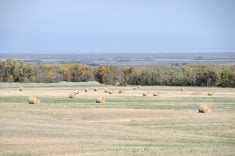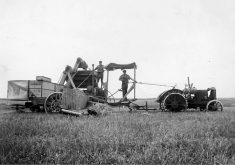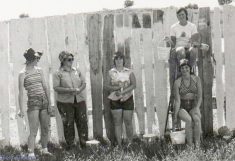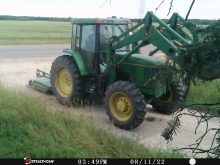A young man visits a doctor’s office in his rural town. A few weeks earlier, he had squashed his finger in a work accident. He didn’t need medical attention but he couldn’t do his normal job.
Now he’s ready to go back to work, but before he can punch the clock again, he needs a doctor to fill out a form.
The doctor looks at his finger. It looks fine and the man says it feels fine. Is he ready to return to work? He says yes. The doctor fills out the form.
Read Also

Finally getting paid for sustainable farming?
Alberta project says they might have a line on a workable ecosystem credit model to reward farmers for sustainability, and Manitoba might be next
It’s a routine interaction at Dr. Nichelle Desilets’ clinic in Neepawa. Some folks don’t need medical attention. They just need a doctor to sign a form for their employer or insurance company.

“That took up a 15-minute appointment,” Desilets told the Co-operator. “[It] could’ve been given to maybe a young mother with a sick child that needed to be checked out just for some reassurance. Or maybe I would’ve been able to see one of my many uncontrolled diabetics that I’m trying to get into the office to help them with their blood sugars.
“I spend a lot of time filling out forms.”
Though important to the patient, such forms don’t require much medical knowledge.
Later that day, Dr. Desilets might find herself choosing between seeing one more patient and going home to be with her family.
“It’s really hard to say no when, you know, the staff are asking if you can just see a few more people at the end of your clinic day, but it’s your child’s … last gymnastics class where the parents get to go watch.”
There are never enough hours, she said, but if the administrative work – the forms, the phoning to find care for her patients – were simplified, maybe rural doctors like her would be able to treat more patients without teetering on the edge of burnout.
[RELATED] Medical meltdown: Know the nearest available ER, doctors urge rural residents
Critical issue
Reducing administrative burden is one of several recommendations released in a report by Doctors Manitoba, an advocacy group for Manitoba physicians, on Oct. 28. Desilets sits on the Doctors Manitoba board of directors.
The report pinpoints how bad rural and northern doctor shortages have become, and what the province and health authorities can do to address the problem.

Manitoba has the lowest number of family physicians per capita among all provinces, the report says, at 108 per 100,000 residents. In rural Manitoba, the number ranges between 92 in the Interlake-Eastern region to 149 in the Prairie Mountain region.
Access to care in First Nations communities has also deteriorated. In the past 20 years, the number of people who must travel to Winnipeg for health care has doubled.
The shortage has made it difficult to maintain services, the report says. This summer, two-thirds of rural hospitals closed their emergency rooms either full or part time.
To make matters worse, a survey by Doctors Manitoba found that 43 per cent of physicians plan to retire, reduce their work hours or leave Manitoba.
The report says there’s been a 19 per cent increase in doctors over the past 20 years.
“So why, with more physicians, do we feel further behind?” it asks.
New challenges
In a summit that drew doctors, health care leaders and government officials, Doctors Manitoba heard that health care has changed in the last two or three decades.
People are living longer and with more chronic diseases. Medicine is more advanced, with more ability to diagnose and treat conditions, the report says. This means some doctors must specialize, making more physicians needed overall.
An increasingly heavy administrative burden takes doctors away from caring for patients.
Poor coordination of air ambulances and government disputes over responsibility for health care “add to the distress for physicians providing care in First Nations communities,” the report says.
It also notes that most doctors don’t have stay-at-home spouses as many would have had decades ago. This prevents them from working as much overtime as their predecessors.
Not that they’re not working long hours already. Rural doctors often wear multiple hats, Desilets said.
Besides her family practice, Desilets takes turns covering the local emergency room. She runs a small surgical program and works in Brandon’s family planning clinic. She has continuing health education to keep up with, and is asked to do health advocacy and planning work.
All the doctors in Neepawa provide multiple services, Desilets said. They might work at the personal care home or provide chemotherapy.
To a degree, they must do this work, but they also want to do it, said Desilets. It keeps work interesting, and it allows them to see patients at different stages and places of life.
Taking a toll
However, about half of rural and northern doctors are burning out, the report says. Burnout comes from chronic stress – long hours, lack of support and lack of control over work tasks.
It also comes from being responsible for patient outcomes but not being able to control all factors of their care, said Desilets. For instance, having a very sick patient, not enough resources to treat them, and no available beds in a better-equipped hospital.
“There are definitely weeks where you feel ineffective and you feel that no matter how hard you’re working, that you’re not able to accomplish what you know that your patient needs,” she said.
Burnout is one of the main reasons doctors are leaving, the report says.
It contains five recommendations.
- Recruit more doctors by expanding training, including for international doctors, streamline recruitment efforts, and develop financial support for doctors moving into rural and northern areas, e.g. recruitment grants.
- Find efficiencies to free physicians’ time for more patient care and reduce frustration. This includes a centralized service for referring patients to specialists or finding bed space; and allowing doctors to add other health professionals like nurses and nurse practitioners to their practice so they can see more patients.
- Address burnout and mistreatment by creating a task force to cut unnecessary paperwork and by working with regional health authorities and communities to address racism and mistreatment of doctors by patients, colleagues and health leaders.
- Support rural and northern doctors to practice longer by developing peer support networks and mentorship programs and maintaining clinic infrastructure and equipment through community-owned facilities or capital support.
- Recognize and support the role communities and chambers of commerce can play in recruiting and retaining doctors and their families by providing provincial support to help communities recruit and settle doctors and by engaging with Indigenous leaders on doctor shortages, recruiting and retaining more Indigenous physicians.
All five recommendations are urgent, the report said. However, it proposes a three-year approach.
“Doctors Manitoba is eager to collaborate on solutions that will ensure Manitobans get the care they need,” said Doctors Manitoba CEO Theresa Oswald in a statement sent to the Co-operator.
”We look forward to an opportunity to assist government and Manitoba Health in getting advice from physicians in the system who are living challenging issues every day.”
Oswald added that Health Minister Audrey Gordon attended the rural health summit in Portage la Prairie in September.
“We are hopeful we can work with health system leaders to come up with workable and sustainable solutions,” Oswald said.
















